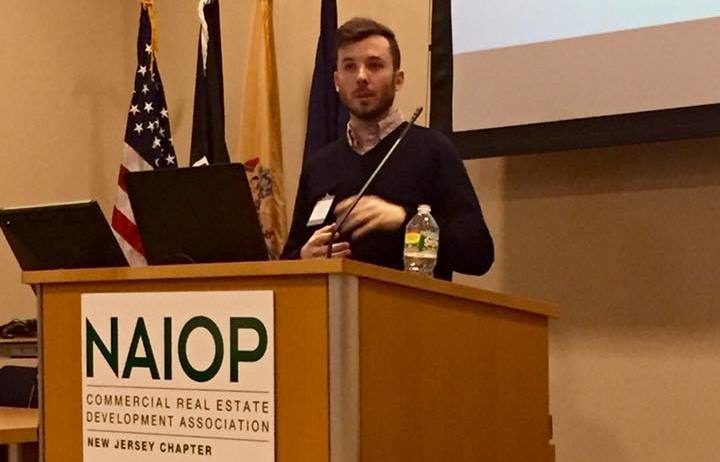Upload your press release
NAIOP New Jersey: Transportation and Logistics are Keys to Growing State's Economy

PHOTO: Matt Powers,Uber NJ&CT
New Jersey's economic growth hinges on the successful implementation of transportation and logistics initiatives designed to meet the demands of a rapidly changing world. That was the message from industry experts at NAIOP New Jersey's Annual Transportation and Logistics Update, held at the NYSA Training Center in Elizabeth.
"With the question of funding resolved, we have plenty of work still to do," said Michael G. McGuinness, CEO of NAIOP NJ, the commercial real estate development association. "Our speakers will provide insight into how our state's ongoing transportation and logistics issues are going to be addressed, and what current trends and challenges mean for the commercial real estate industry."
Innovative Solutions to Transportation Challenges
"From real estate developers to non-profits, our goal is to partner with businesses and organizations to provide innovative solutions to their workforce, package delivery and public safety challenges," said Matt Powers, general manager of Uber NJ & CT. "Uber is essentially a software company that connects riders with drivers, and our software is incredibly flexible."
In New Jersey, Powers cited a number of initiatives that Uber has piloted through local partnerships. It launched a first mile/last mile public transit program in the town of Summit, offering discounted rides for those traveling to and from the train station within Summit. The company is also working with Summit, Voorhees, Evesham and Old Bridge on a program to reduce instances of DUI by subsidizing rides on weekend evenings.
Through a partnership with Hackensack University Medical Center, Uber is providing accessible rides to the more than 10,000 patients the hospital sees for same-day procedures. The program offers discounted rides and dedicated pick up/drop off locations throughout the facility's campus. "These are small examples that can have a huge impact when rolled out across the country," said Powers.
Nationwide, Uber's initiatives include partnering with departments of transportation to augment bus and shuttle services, ferrying food and packages via bicycle and messenger services in urban settings and working with real estate developers to reduce parking requirements for multifamily housing projects. "We're looking to identify the biggest problems communities have and find creative ways that our service can help alleviate them," said Powers.
Keeping Pace with the Velocity of Change
Logistics professionals shared their perspectives on the challenges and opportunities created by the latest trends in the global supply chain, specifically automation, e-commerce and same-day and next-day delivery. Anne Strauss-Wieder, director of Freight Planning for the North Jersey Transportation Planning Association, moderated the discussion and provided an overview of industry trends and the challenges facing the region, now and in the future. They range from workforce shortages and lack of available industrial space to the challenges of last mile retail and ensuring that investment in infrastructure will continue.
"We are the most densely populated state in the largest consumer market in America. The demand is here, and the distribution needs to be here," said Strauss-Wieder.
Panelists were asked to share the most significant issue currently keeping them up at night. Bethann Rooney, assistant director of Port Performance Initiatives at the Port Authority of NY & NJ, said, "The velocity of change, and how quickly innovations are being deployed, is like nothing we've seen before. The industry is extremely dynamic, with ongoing mergers, acquisitions and bankruptcies among ship carriers, terminal management changes, growing ship sizes and overcapacity of ship inventory."
Specifically pointing to larger ships, Rooney added, "We keep saying the big ships are coming, but they're here. Two-thirds of the port's cargo is on 8,000 TEU ships, and this will increase to 10 to12,000 TEU's and up when the Bayonne Bridge is completed. The entire supply chain will need to adjust operating parameters to service these ships."
Tom Connery, president of New England Motor Freight, a privately held logistics firm specializing in less-than-truckload carriers, said, "The biggest issue we see is that technology has pushed the industry to where the customer expectation is to get things immediately. The reality is that the supply chain can only move so fast, so meeting expectations is tough."
Connery acknowledged the vital importance of modernizing operating systems and implementing efficiency measures in order to keep pace with the increased emphasis on speed-to-market. Asked about the impact of the shift to online purchasing versus brick-and-mortar stores, he said, "The biggest impact is actually a shift in geography. As companies like Amazon move their distribution closer to population centers, the length of the haul is shorter. This is having a major effect on our business in New Jersey."
Related Articles
Copyright ©2024. All Rights ReservedDesign, CMS, Hosting & Web Development :: ePublishing